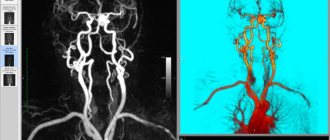Nymphomania is a type of hypersexuality, meaning supernormal sexual desire in the fair sex.
Even in ancient Greek writings, nymphomaniacs are mentioned. This name belonged to the forest creatures that were legendary. Forest Nymphs lured the men they liked into the deep forest thicket and tempted them with depraved acts.
The culmination of everything was long sex, after which the seduced men forever lost the feeling of pleasure from sexual intercourse. There is also an opinion that the Nymphs taught people sexual positions.
One of the spouses of the ancient Roman ruler Claudius was also a nymphomaniac. The woman had many sexual relationships with almost all representatives of the imperial guard, and worked in brothels as an undercover prostitute. The Messalina complex was named after her, and it is synonymous with nymphomania . Andromania is also a synonym for nymphomania.
Clinical picture
Women diagnosed with “nymphomaniac” are most often unable to obtain satisfaction from a single partner, so they resort to other sexual partners. Casual sex acts are the main difference. Women with vibrant sexual activity are able to clearly control their sexual intercourse. This is usually expressed in the selection of a partner.
The word "nymphomania" has an outdated designation, namely "rabies of the uterus." Today the term is used as a synonym.
The main symptom of the disorder is increased excitability. The patient is able to get turned on by one innocent look at a man, by just the thought of him. Some patients sometimes try to be satisfied with the help of one permanent partner, but the man quickly gets tired of such pressure. It is then that a woman begins to look for people who want to satisfy her own sexual hunger and gives herself to strangers.
Nymphomania can deprive a woman of common sense and disgust. It is not for nothing that the disorder is included in class F52.7 of the ICD-10 list under the name “Increased sexual desire.”
As a rule, nymphomaniacs are not interested in whether their partner is single or married, whether he is younger or older, or what his social status is. A woman’s obsessive and uncontrollable desire to get a sexual partner is the main sign of the disorder.
Symptoms such as selfishness and narcissism in bed can be identified. The main goal is satisfaction in any way. Although nymphomaniacs are aware of the presence of AIDS and sexually transmitted diseases, the possibility of acquiring the disease is not able to stop a “hungry” woman.
The problem is much deeper and stronger than shame and common sense, which is why a girl with the disorder is not able to stop on her own without specialized help.
Why are nymphomaniacs dangerous?
No matter how desirable nymphomaniacs may seem to men, they pose a certain threat. First of all, nymphomania is a serious pathology, and not a dream come true. Both very young and older women are susceptible to it. They are obsessed with sex and are not interested in personal development, career or family.
The emergence of mental female pathologies
Nymphomania is dangerous for the carrier of the disease. The girl is susceptible to developing terrible infectious diseases. Too much activity in bed leads to rapid weight loss and the appearance of other mental pathologies.
For a man, a woman’s hypersexuality also poses a danger. Sexually transmitted diseases, destruction of the psyche and family life will certainly be an addition to a night of love with a nymphomaniac.
Causes of nymphomania
The main causes of the disease:
- Damage to areas of the brain, its structure, as well as the hypothalamus (most often due to injury). In some areas of the hypothalamus there are special centers responsible for thirst, hunger, sleep and reactions that are closely related to behavioral reactions, reproduction and aggressiveness. Increased libido is caused by hypothalamic hypersexuality syndrome. Attacks of excessive sexual arousal appear, which are caused by unusual sensations in the genital area, increased sensitivity of the genitals, causing a feeling of heat, as well as pain in the lower back and lower abdomen. This is accompanied by a frequent urge to urinate.
- Hormonal imbalance. During menopause, hormonal changes occur in a woman's body, which is often one of the causes of menopausal nymphomania. Such a diagnosis is directly related to an imbalance of female and male hormones due to ovarian dysfunction. Unmarried women of advanced age no longer have external characteristics that can attract a young man, and married women have husbands with reduced potency in old age. Thus, they are unable to satisfy their increased sexual needs, and therefore suffer from debilitating sexual desire for days on end. All this is accompanied by severe itching in the genital area.
- Women's diseases and mental disorders. Often women with manic-depressive states, psychopathy, schizophrenia, and ovarian tumors can receive such a diagnosis. During the development of neoplasms or tumors, a woman may experience constant sexual desire.
Questions and answers
What is psychological nymphomania
Nymphomania is a complex mental condition associated with an obsession with sex to the detriment of family, work and social life. The reasons may be physiological or psychological. Physiological factors include hormonal diseases, tumors, and impaired brain activity. In psychological nymphomania, obsession is associated with traumatic experiences, mental disorders, and stress. This disorder is similar to other addictions, such as alcohol or drug addiction. Nymphomaniacs cannot control their behavior, even realizing its consequences.
Partners of a nymphomaniac
Dependence is not always expressed in frequent changes of sex partners. Its manifestation can be observed in monogamous relationships. Sex addicts primarily focus on the number of orgasms they have. In such a situation, a woman is capable of driving her partner to physical and mental exhaustion. Not every man can withstand such a pace. Then the woman is forced to look for new partners or resort to other methods (for example, masturbation). Nymphomaniacs have little interest in the personality of their partner. They evaluate a man solely as a sexual object. Therefore, family life rarely goes well.
How nymphomaniac mothers ruin lives
The disorder ruins the lives of not only nymphomaniacs. It has a detrimental effect on her loved ones. Mothers are often unable to hide their obsession. As a result, the child develops an incorrect understanding of sexuality. Frequent changes of partners take root in children's consciousness as the norm. Growing up, they suffer from antisocial behavior. Interpersonal communication problems may occur.
Children often experience feelings of loneliness and uselessness. After all, the mother is more concerned with herself and her interests. They develop complexes and fears. Health problems (insomnia, enuresis, allergies and other diseases) may also appear.
Confrontation between asexual and nymphomaniac
Asexuality is considered the diametrically opposite sexual disorder. Asexual women not only do not enjoy intimacy, they do not experience attraction at all. Psychologists associate asexuality with the same reasons as nymphomania.
Asexuality should not be confused with a conscious refusal to be sexually active for ethical or social reasons. This is not a refusal of sex, but a lack of desire as such. Asexual women can be in strong, long-term relationships. However, they choose a companion based on his personal qualities and common interests. They are more adapted to society.
Forms of nymphomania
There are two forms of nymphomania, depending on the age of the patients:
They consider themselves temperamental, and an increased level of libido is passed off as feminine dignity, as a positive feminine quality. The boundary between the extreme version of the norm and pathology is not always clear in special cases of hypersexuality. Such nymphomania over the years can develop into menopause. Nymphomania in women has the following examples from life. One American woman officially married 12 times, because her husbands were either forced to divorce her because of her pressure, or died from exhaustion.
If the pathology is not treated, the symptoms will worsen until old age. Menopausal nymphomania leads to perversions (bestiality or tribadity), to excessive masturbation.
Nymphomania is often confused with promiscuity, a form of pathological hypersexuality closely associated with organic brain damage.
Not a disorder: high libido, increased sexual activity during falling in love, love addiction, self-affirmation of women through connections with new partners.
Therapy methods
Nymphomania is a serious pathological disorder of psychological background, accompanied by physiological changes and discomfort. The condition has a negative impact on personal life. Therefore, treatment is required immediately. The sooner you see a doctor, the lower the risk of psychological complications, negative condition of the genital organs and other parts of the body.
The table indicates the main attending physicians and the need for consultation and therapy.
| Doctor | Need for treatment |
| Psychotherapist | This is necessarily the attending physician, with whom we consult throughout the pathology treatment. He must first eliminate the problem, find its root cause, and prescribe treatment methods. In addition to consultations, he may recommend medications. For example, sedatives, tranquilizers |
| MRI Specialist | The need for MRI arises when there is a possibility of developing neurological abnormalities associated with brain pathology. For example, benign or malignant tumor, inflammatory processes |
| Endocrinologist | Nymphomania can develop due to physiological hormonal imbalance or serious disorders. Such patients undergo mandatory treatment by an endocrinologist, taking tests for the presence of all hormones in the body. If any of them are abnormal, hormonal therapy is recommended |
| Immunologist | The specialist prescribes a specific diet that completely excludes foods that have aphrodisiac properties. |
| Venereologist | If a woman is promiscuous, her body may develop sexually transmitted infections or even immunodeficiency. The doctor identifies all pathologies, prescribes comprehensive treatment that restores the reproductive system and other parts of the body |
As soon as a comprehensive examination has taken place and the main cause of the pathology has been determined, a course of treatment is required. An integrated approach is important so that the condition does not reoccur.
If a woman has increased libido and signs of nymphomania, it is better to start drug therapy in a timely manner. Many psychotherapists and sex therapists recommend the drug Bromcamphor. It adequately controls libido, but does not disrupt the hormonal balance in the body. The patient will experience comfort and slight sedation. It is also important to constantly visit a psychotherapist who monitors her condition. The prognosis for treatment is positive if you consult a doctor in a timely manner before contracting severe infections that can lead to death. That is why nymphomania needs to be controlled and visited by a sex therapist and psychotherapist.
Symptoms
The pathology in question is a very serious illness, since it requires particularly close attention, which manifests itself in serious treatment.
Nymphomania in women has the following symptoms:
- obsessive thoughts about sexual intercourse;
- casual intimate relationships;
- excitability, hysteria, aggression and depression, as a consequence of changes in character;
- frequent dissatisfaction with sexual intercourse;
- frequent change of sexual partners;
- lack of interest in a man in spiritual terms, as a person, neglect of his external data;
- uncontrollable attraction to men.
Diagnostics
The disease is diagnosed by a sex therapist, but on the condition that the girl independently comes to the idea of receiving medical treatment.
It is very difficult for patients who are not aware of their problem to make a diagnosis. The causes of the disease are determined through a psychological test.
Psychologists and experts say that in the process of passing such a test, a person is able to focus on his own problems. Thanks to the test, you can better know yourself and get the opportunity to clearly understand your behavior and feelings. Sometimes there is a need to use instrumental and laboratory research methods; a frank conversation with a doctor can help to make a final diagnosis.










